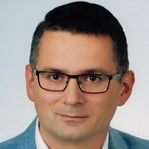Sustainable Machining of Modern Difficult-to-Cut Materials
A special issue of Metals (ISSN 2075-4701). This special issue belongs to the section "Metal Casting, Forming and Heat Treatment".
Deadline for manuscript submissions: closed (26 February 2021) | Viewed by 5229
Special Issue Editor
Interests: milling; turning, difficult-to-cut materials; sustainable machining; CNC programming; machining process optimization
Special Issues, Collections and Topics in MDPI journals
Special Issue Information
Dear Colleagues,
The effectiveness of production is an important element of a company's sustainable development, leading to the production of machine parts, taking into account economic, social, and ecological aspects. The production that takes into account all of the dimensions of sustainable development tends towards processes that minimize negative effects on the environment, saves energy and natural resources, is safe for employees and consumers, and is economically justified. The issue becomes even more complex if we take into account difficult-to-cut materials and the restrictive requirements of the recipients of manufactured products.
The modern difficult-to-cut materials are widely used in many industries because of their specific properties. On the other hand, the same properties adversely affect machinability. Physical properties like a low thermal conductivity and high work-hardening tendency, among others, can contribute to the high cutting forces and temperatures, which may lead to the intensive wear of the cutting edge. The tool wear indicator could reach a critical value after a short period of cutting time. Further machining using worn tools could lead to an exceeding of dimensional tolerance of the workpiece, worsening surface roughness and also impact on surface integrity.
The machinability depends on many elements related to the material under machining, the cutting tool, and the cutting parameters, as well as additional factors like the cooling strategies and hybrid processes.
This Special Issue provides an excellent opportunity for researchers who study the effective machining of modern difficult-to-cut materials by taking into account different cooling and lubrication methods, including high-pressure cooling (HPC), minimum quantity lubrication (MQL), and dry cutting, as well as the effect of hybrid manufacturing processes like laser-assisted machining (LAM) and ultrasonic-assisted machining and grinding. In this context, the machining of materials produced by additive manufacturing should also be considered. It is our pleasure to invite you to submit original research papers or state-of-the-art reviews that are within the scope of this Special Issue.
Nowadays, it is important that the manufacturing process should also incorporate the aspects of sustainable machining, taking into consideration questions of economy, environment, and social implications related to production. These requirements determine the modern technological approach to the process of machining.
Prof. Witold Habrat
Guest Editor
Manuscript Submission Information
Manuscripts should be submitted online at www.mdpi.com by registering and logging in to this website. Once you are registered, click here to go to the submission form. Manuscripts can be submitted until the deadline. All submissions that pass pre-check are peer-reviewed. Accepted papers will be published continuously in the journal (as soon as accepted) and will be listed together on the special issue website. Research articles, review articles as well as short communications are invited. For planned papers, a title and short abstract (about 100 words) can be sent to the Editorial Office for announcement on this website.
Submitted manuscripts should not have been published previously, nor be under consideration for publication elsewhere (except conference proceedings papers). All manuscripts are thoroughly refereed through a single-blind peer-review process. A guide for authors and other relevant information for submission of manuscripts is available on the Instructions for Authors page. Metals is an international peer-reviewed open access monthly journal published by MDPI.
Please visit the Instructions for Authors page before submitting a manuscript. The Article Processing Charge (APC) for publication in this open access journal is 2600 CHF (Swiss Francs). Submitted papers should be well formatted and use good English. Authors may use MDPI's English editing service prior to publication or during author revisions.
Keywords
- sustainable machining
- difficult-to-cut materials
- high-pressure cooling
- minimum quantity lubrication
- dry cutting
- laser-assisted machining
- ultrasonic-assisted machining





